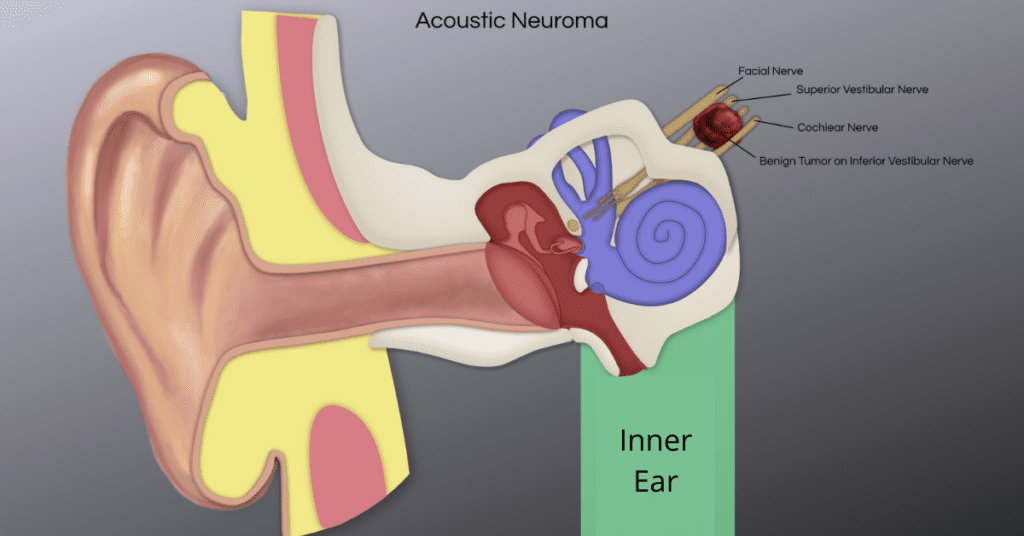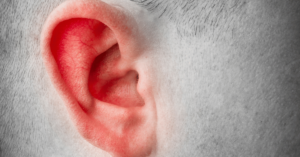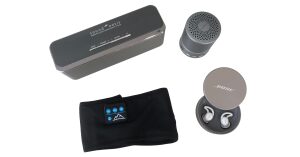A vestibular schwannoma, also known as an acoustic neuroma, is a benign, non-cancerous tumor. This type of tumor grows on the vestibular nerve that goes from your inner ear to your brain, however, its benign state doesn’t mean that it cannot be harmful to you and your hearing.
This usually slow-growing tumor is caused by an overproduction of Schwann cells – cells that surround the neurons in the brain and send information throughout the body. Occasionally, a vestibular schwannoma can be fast-growing, making it more dangerous, but in general, this is very rare.
"Treble Health helped me reduce my tinnitus by about 80%, and now I can live my life again!"

"Treble Health helped me reduce my tinnitus by about 80%, and now I can live my life again!"
– Steve D.
Book a free consultation to learn which Treble Health solution is right for you. Join Steve and thousands more who have found lasting tinnitus relief.
There are a few key facts to know about vestibular schwannoma:
- It is usually unilateral, meaning it only occurs in one ear (which can be an otologic red flag).
- They occur more often in women than in men.
- The most common age range of diagnosis is between 35 and 60 years old.
- Its exact cause is unknown, but is believed to stem from issues with a certain gene.
Now we will discuss more about its symptoms, diagnosis, audiometric signs, and treatment options.
Symptoms
The symptoms of an acoustic neuroma can be easily missed and may take many years to develop in the first place. You will usually get noticeable symptoms when the tumor starts affecting your hearing and balance nerves. Your first signs are likely to be unilateral tinnitus and hearing loss, and the hearing loss tends to gradually worsen over time.
If the tumor grows, you will likely see more severe symptoms that can’t be missed. You may also eventually experience headaches, dizziness or imbalance, and an unsteady gait. Additional symptoms include facial numbness and weakness of facial muscles. The tumor can also press on nearby nerves, blood vessels, and brain structures, and if it grows large enough, it can press on the brainstem and become a life-threatening issue.
You should see your doctor if you have any worrisome symptoms, particularly hearing loss in one ear, tinnitus in your ears, or any trouble with your balance. Early diagnosis is important to monitor and/or treat the tumor before it grows large enough to cause serious complications like total hearing loss.
Diagnosis
Early detection is key to preventing serious consequences. If you have any of the symptoms mentioned above, speak to your doctor. Some of the specific audiometric signs of an acoustic neuroma can be asymmetrical hearing loss, a unilateral decrease in speech recognition scores on a hearing test, and an abnormal ABR test.
The first is a complete audiological evaluation, which can diagnose unilateral or asymmetric hearing loss. An Auditory Brainstem Response (ABR) test may also be used. This painless test is helpful in assessing the function of the eighth nerve (vestibulocochlear nerve) by using sound and electrodes to measure responses of the auditory nerve and brainstem.
Imaging scans like an MRI with contrast dye can also be key, as this can be used to find tumors as small as one to two mm. A CAT (CT) scan can also be used, but it can miss smaller tumors.
Wait & Watch
A common approach to this condition is to seek a “wait and watch” approach instead of other treatments or surgery. The tumor is observed and monitored. It only works for small tumors of a stable size.
This option requires a routine MRI to monitor the size of the tumor. This approach can be a good option for those who have medical conditions that make surgery riskier, those who do not want treatment, or those who have the tumor on the side of their only hearing ear.
Treatment
A non-surgical treatment is radiation therapy.
The radiation treatment is called Gamma Knife, which is not an actual knife but rather a concentrated, focused dose of radiation. The radiation only hits the targeted area, so this may be a good option for the elderly or those with certain health conditions. This procedure is noninvasive, requires no overnight hospital stay, and can be used to treat tumors that are less than one inch in diameter.
It has both advantages and disadvantages:
- Advantages: decreased cost and lower post-treatment morbidity & mortality (less death and disease)
- Disadvantages: regular monitoring, continued vestibular symptoms (dizziness and/or vertigo), worsening of tinnitus.
Surgery
Surgery is another option for treating a vestibular schwannoma, with the aim of removing the tumor. There are three techniques for tumor removal by surgery: suboccipital retrosigmoid, middle fossa, and translabyrinthine.
Suboccipital retrosigmoid surgery uses a posterior trajectory. It is performed by removing a part of the occipital bone (behind the ear) in order to take out the tumor. The advantage of this approach is that hearing conservation is possible. The disadvantages are that it may have a higher incidence of tumor recurrence or persistence and it has an increased risk of a severe postoperative headache.
The middle fossa surgery uses a superior-inferior approach (above and forward of the ear). The advantages of this approach are good long-term outcomes and the best chance of hearing preservation. The disadvantages are that postoperative facial paralysis is more common and it is a difficult procedure. You need a very skilled surgeon for this.
Finally, there is the translabyrinthine surgery. It uses a lateral trajectory, behind the ear. Its advantage is a decreased risk of facial paralysis after the operation. The major disadvantage is a complete and unavoidable hearing loss. This is used for large tumors or tumors that have already caused very significant hearing loss.
Treatment Of Issues Resulting From An Acoustic Neuroma
While observation, radiation treatment, or surgical treatment may be recommended by your physician for a vestibular schwannoma, it is likely that symptoms of hearing loss and tinnitus may persist. Treatment of hearing loss may depend on what medical treatments are used. In some cases, after radiation treatment or surgery, a hearing aid can help compensate for some hearing loss in the affected ear. However, in some cases, a traditional hearing aid is not beneficial, and other hearing assistive devices may be recommended by your audiologist. Tinnitus treatment, however, does not necessarily depend on your medical treatment plan. A few methods of tinnitus treatment are sound therapy, counseling, or TRT.
Tinnitus Retraining Therapy (TRT) is an individualized management for long-term intervention when you are experiencing debilitating tinnitus. Its goal is to provide habituation of the sounds in order to treat tinnitus. Habituation for tinnitus means to diminish the physiological or emotional response to tinnitus. This is done through both tinnitus maskers and psychological therapies to teach you how to ignore tinnitus, reduce stress, and perform deep relaxation exercises. This is a service we offer at Treble Health, and you can take a short quiz to see if you are a candidate.
Conclusion
While this non-cancerous tumor can be dangerous or cause severe problems, there are treatments for it and the most unfortunate side effects will not happen in all cases. Treatments include monitoring, radiation, and surgery. Hearing loss and tinnitus are manageable with the help of an audiologist, and TRT is an effective treatment for tinnitus regardless of your medical treatment plan for the tumor. Early treatment and monitoring are key, so remember the main symptoms of unilateral tinnitus, hearing loss, and dizziness or balance problems. If you are dealing with tinnitus, the best treatment option is through a combination of therapies – all of which are included in our Treble Health treatment program.
Next Step: Book Free Consultation
- 75% of patients reduced their tinnitus within three months after following our recommendations.
- "I feel like Treble Health literally gave me my life back." - Randy S. (verified customer)
- Join thousands of people who have reduced their tinnitus after scheduling a free consultation.












